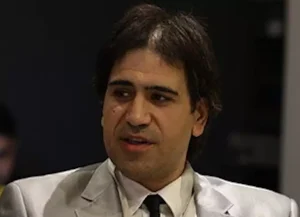Declan Hayes: Are the Days of Moroccan Hash Numbered?

Though Moroccan hash might not quite go the way of the dodo, its fate will most likely resemble that of Ceylonese tea, where globalisation’s forces of consolidation and commodification will flush it down our collective memory hole, where it will be but a memory of more halcyon days that will never return.
Although hashish or kief has been a part of Moroccan Sufi rituals for centuries, it only became a serious export earner in the 1970s when Morocco became a Mecca for Westerners wanting to enjoy an affordable and accessible high.
Fast forward to today and Morocco’s Northern regions, especially in the province of Ketama, has well in excess of 30,000 acres growing cannabis, with tens of thousands of farmers and sundry others keeping the supply chain solid. The end result of all this is some 15,000 tons of Moroccan hashish finds its way into the lucrative markets of the European Union each and every year. That is a lot of hash and a lot of euros.
Morocco’s Rif Mountains are nicknamed the Kif Mountains”, kif being the Moroccan name for hash and the Rif foothills being synonymous with the production of hashish.
For those into the anthropological side of things, Rif weed is dried in the dark for months, as opposed to drying the bud first for about a week and then curing it in a cool, dry place for a few months. Although the resulting dried product wouldn’t pass muster in America, since the Moroccans are making hash and not weed, this is not an issue. The dry buds are then put in a bowl, covered with a filter of panty hose, and covered in another piece of cloth, sort of like the production of artisanal cheese. The bowl is then positioned between the feet, making it easier to beat repeatedly with sticks.
Once the weed has been beaten sufficiently, it is uncovered in a bowl. The resultant product is a powdered, concentrated weed, kief. All in all, about a kilo of weed produces10 grams of kief, which many Moroccan women prefer over the more potent black hash.
There, however, is a problem as the more hybrid strains now being cultivated bring a much stronger high than do the traditional strains, which are losing market share as a consequence. In Morocco, as much as elsewhere, it seems gentler and more traditional highs are giving way to the mass produced captogen chemical concoctions the Mafia’s factories produce to keep the masses opiated and quiescent.
For now, business remains good and demand remains solid for the quiet cerebral and active high that is synonymous with Moroccan hash, which remains, at least for now, Europe’s favourite.
Although smuggling from Morocco is less risky now with the decriminalisation of cannabis in Spain and Portugal, there are still immense profits to be made by the various criminal gangs involved in its supply chain. While Morocco has relaxed its own laws, as recreational use of marijuana still remains very much illegal there, it is an industry that innocents abroad are best to keep well clear of.

Although that would be the ideal, given that the United Nations Office on Drugs and Crime claims that Morocco is the “world’s largest cannabis resin producer,” that at least 800,000 Moroccan locals live off the industry, which rakes in an estimated $10 billion in annual sales, we can expect generations more of backpackers to enjoy their Midnight Express moments in Morocco as much as elsewhere.
Midnight Express, although set in Turkey, was a child of the 1970s and that is probably where such adventures belong. Moroccan hash is probably best left to Moroccan women and to anyone else who wants to run the risks that drug gangs and their associates bring with them. At day’s end, there are safer ways to enjoy life
Want to chase the pulse of North Africa?
Subscribe to receive our FREE weekly PDF magazine













